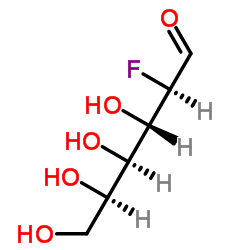Can 3'-deoxy-3'-(18)F-fluorothymidine or 2'-deoxy-2'-(18)F-fluoro-d-glucose PET/CT better assess response after 3-weeks treatment by epidermal growth factor receptor kinase inhibitor, in non-small lung cancer patients? Preliminary results.
Amit Bhoil, Baljinder Singh, Navneet Singh, Raghava Kashyap, Ankit Watts, Sharma Sarika, Bhagwant Rai Mittal
文献索引:Hell. J. Nucl. Med. 17(2) , 90-6, (2014)
全文:HTML全文
摘要
The objectives of this study was to study the diagnostic efficacy of 3'-deoxy-3'-fluorine-18-fluorothymidine ((18)F-FLT) and of 2'-deoxy-2'-(18)F-fluoro-d-glucose ((18)F-FDG) positron emission tomography/computed tomography (PET/CT) for response evaluation following three weeks treatment by epidermal growth factor receptor-tyrosine kinase inhibitor (EGFR-TKI) in non small cell lung cancer (NSCLC) patients. Fifteen patients of advanced stage (IIIB-IV) NSCLC planned for oral 1st or 2nd/3rd line EGFR-TKI treatment were enrolled in the study. Baseline, prior to treatment, and follow-up after three weeks, (18)F-FLT and (18)F-FDG PET/CT imaging was performed in all patients. The standard uptake lean body mass (SULpeak) and total lesion glycolysis (TLG) values of the hottest lesions were calculated in all patients using semi-quantitative analysis. Statistical analysis on PET semi-quantitative data was used to evaluate the overall survival (OS) and progression free survival (PFS). The patients were either classified as responders or non-responders or at a steady state according to the PET response criteria in solid tumors (PERCIST). The receiver operating characteristic curve (ROC) analysis was done on the (18)F-FDG PET/CT clinical responders, to derive the cut-off values on the corresponding data sets between responders and non responders. Results showed that in responders (18)F-FDG SULpeak values better predicted OS and PFS values when compared to (18)F-FLT SULpeak values and also were a better predictor of OS as compared to the TLG values. In responders, the ROC analysis carried out on (18)F-FLT PET/CT imaging data in responders indicated a decrease of ≥22% in SULpeak and a decrease of ≥0.7 in absolute values. Three (3/15) patients developed resistance to EGFR-TKI treatment at 3 months of follow-up. In conclusion, in both responders and in non responders, patients with NSCLC treated for 3 weeks by EGFR-TKI, both OS and PFS were better predicted by (18)F -FDG SULpeak than by (18)F -FLT SULpeak. Although, the difference was only borderline, yet, (18)F -FDG SULpeak was a better predictor of OS compared to TLG values. However, to validate these findings, studies need to be carried in a larger number of patients.
相关化合物
| 结构式 | 名称/CAS号 | 分子式 | 全部文献 |
|---|---|---|---|
 |
2-脱氧-2-氟-D-葡萄糖
CAS:29702-43-0 |
C6H11FO5 |
|
18F-fluoride positron emission tomography for identification...
2014-02-22 [Lancet 383(9918) , 705-13, (2014)] |
|
11C-acetate PET/CT for metabolic characterization of multipl...
2014-05-01 [J. Nucl. Med. 55(5) , 749-52, (2014)] |
|
PET/CT with 18F-FDG- and 18F-FBEM-labeled leukocytes for met...
2015-01-01 [J. Nucl. Med. 56(1) , 127-32, (2015)] |
|
The [18F]FDG μPET readout of a brain activation model to eva...
2014-08-01 [J. Pharmacol. Exp. Ther. 350(2) , 375-86, (2014)] |
|
FDG-PET scan in assessing lymphomas and the application of D...
2013-06-01 [J. Pak. Med. Assoc. 63(6) , 725-30, (2013)] |